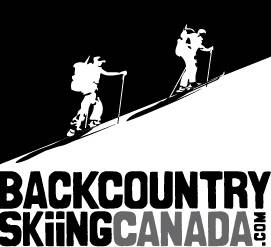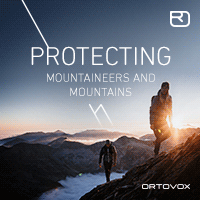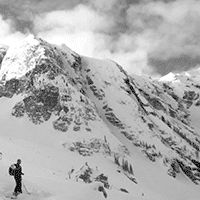Japlanning - how to score powder in Japan
After sharing three blogs filled with Japanese powder shots, I would also like to give you a few practical tips. Feel free to add your own suggestions, so we can create a good overview!
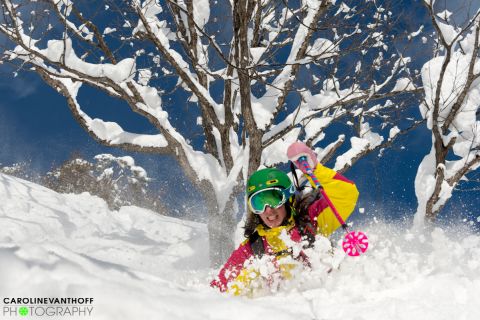
Photography: Carolinevanthoffphotography http://carolinevanthoffphotogr.....ewbook.com
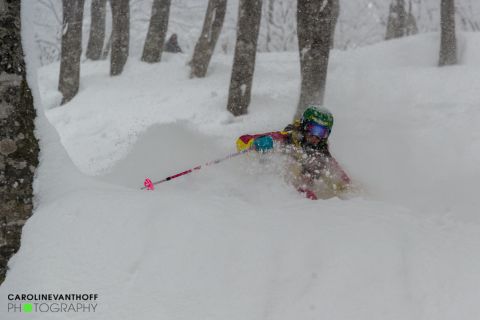
The Japanese ski season runs from mid-December to the end of March, with the most snow falling in January. Depending on the length of your stay, you can choose to visit Hokkaido, the North Island and Honshu, the biggest island. This time we spent three weeks on Honshu and skied several resorts around Nagano. Our guide Dave Enright explains us the differences between both islands: “Hakuba does get a bit less snow than Niseko, but it is all relative. I would give Hakuba an 8 for snow and Niseko a 10. For terrain I would rate Niseko a 4 and Hakuba a 9.5. It is lift-accessed heli-skiing, but I guess I am biased having lived here for years.”
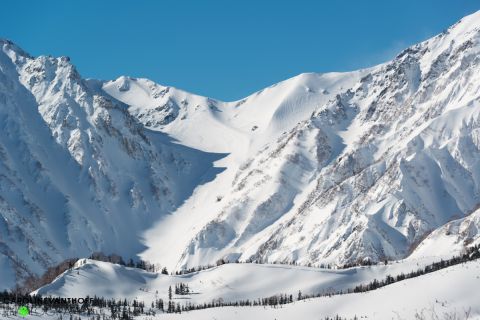
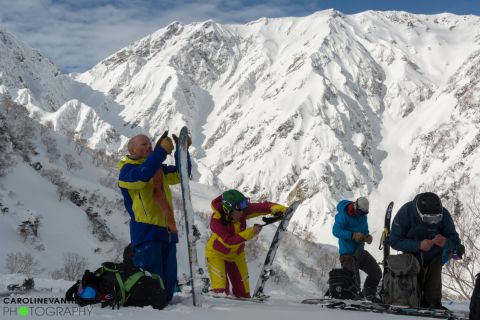
We visited the following resorts: Myoko, Nozawa Onsen, Hakuba, Madarao & Tangram Ski circus and Tenjindara.
Ski with a guide!
Until a few years ago, skiing off-piste was still prohibited in some ski areas. Nowadays, each ski area has its own specific measures to try to regulate backcountry skiing. These include signing in and out with ski patrol by means of a special form, having a so-called ‘powder pass’ with you and wearing a colored bib. Whether these measures actually help improve safety remains to be seen..?
Dave, our very experienced guide and the founder of Evergreen Outdoor Center
http://www.evergreen-hakuba.com has a different approach. He is currently working on a very cool new project: opening a new controlled backcountry area in Tsugaike (a resort in Hakuba). For now it is still illegal to ski off-piste at Tsugaike and patrol will pull your pass. Dave hopes to open the area later this season. He was so kind to gives us (and Travis Rice) a sneak preview. For two days and we skied the untouched powder in this beech and birch forest, filled with pillows, drops and rollers.
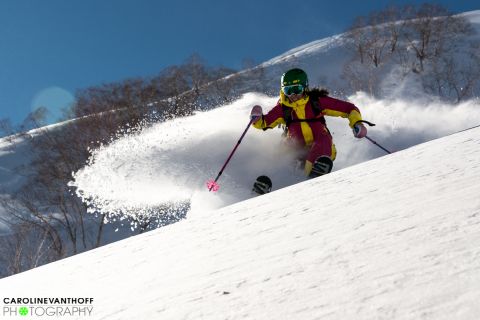
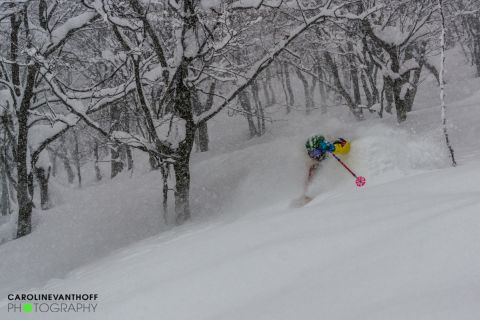
Japan is not that expensive
Sure you have to get there first, but once you are there you don’t have to spend that much. Of course the current exchange rate helps: 1000 Yen = 7,5 euro. To give you an idea of the prices: a day pass will cost you between 20-35 euro and a bowl of hot steamy udon noodles with shrimp tempura on the slopes will only cost you around 6 euro.
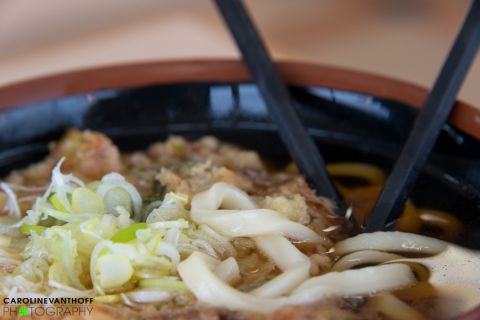
If you prefer to bring your own lunch you can buy cheap (and very good) snacks at the 7 Eleven. Our favorite was a hot o’nigiri: a rice triangle wrapped in seaweed filled with for example salmon, which costs less than 1 euro. You can decide yourself how much you want to spend on accommodation. We highly recommend spending a night in a ‘Ryokan’, a traditional Japanese inn where you sleep on futons and can enjoy delicious Japanese cuisine consisting of miso soup, rice and raw fish. The mattress might be a bit harder than what you are used too and most of the times there no showers. However they’ll have an onsen where you can soak your tired muscles and wash up. For an overview of all the places we stayed, check the ‘details’ at the bottom of this blog.
Japan is not only the ultimate Ski-topia (fresh powder every day!), it is also a cultural experience. For us Westerners, Japan is a country of idiosyncrasies such as heated toilet seats, vending machines selling beer accessible to anyone and located in every imaginable location and special toilet slippers. The Japanese hospitality is truly unique and transcends everything we think is service. It is for example quite normal for a Japanese to practice his/her bow each morning to make sure it is exactly in a thirty-degree angle.
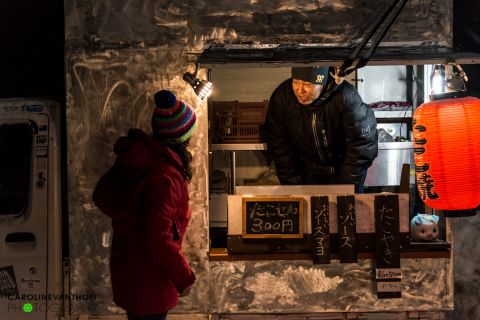
Bring cash
You will hardly find any ATM’s in Japan. Hakuba only has two. So make sure you carry lots of cash. But don’t worry; Japan is one of the safest countries in the world.
I’m on a powder diet!
Having worked up a ravenous appetite after a morning full of powder, we sit down in the ‘resrorant’ and order a bowl of steaming udon noodles, which we loudly slurp in keeping with Japanese custom. The healthy and delicious Japanese food has had a very positive influence on our trip and, in no time, our diet consists of miso, rice, noodles and other local delicacies. To drink we prefer a (hot) sake, a nice cold Asahi beer or green tea.
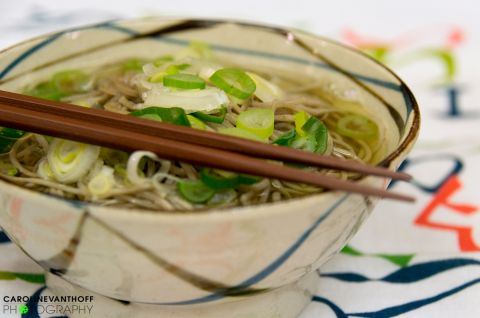
Lost in translation
Wherever we go we spot spelling mistakes, such as ‘calefur snow falling flom loof’, ‘fast aid kit’ and ‘experts onry’, which make us giggle every time.
Shinkansen
Take the train! Tickets are affordable and the trains are always on time and extremely fast (the Shinkansen goes 300 kilometers per hour!). Buying the actual ticket can be a challenge as very few people speak English, but it is the most comfortable way to travel.
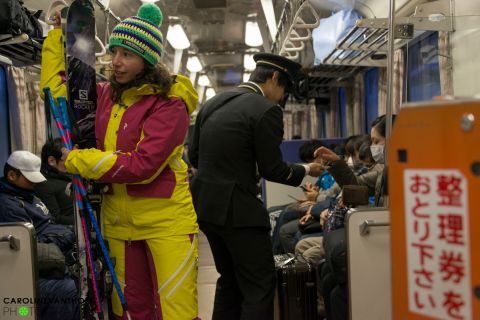
We made a tiny mistake by taking a Chuo Taxi http://www.chuotaxi.co.jp/publ...../index/10/ from Narita airport to Myoko (a 6 hour drive) for 150 euro per person. Looking back, we should have taken the train or the Nagano Snowshuttle http://www.naganosnowshuttle.com that runs 1-2 twice a day between Narita, Hakuba, Myoko and other ski resorts.
Japanese après-ski:
Life in Japan is simple: eat, ski powder, onsen, eat, sleep and repeat! After a long day on the mountain there is no better way to relax than laying in an onsen, a natural hot spring filled with thermal water. It is a Japanese custom to thoroughly wash yourself before entering the onsen. The Japanese also believe that onsens have healing powers because of the minerals they contain. Either way it is physically and mentally cleansing and relaxing.
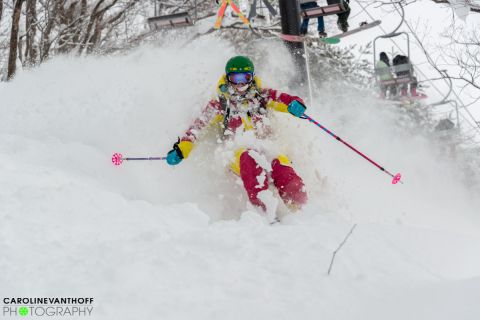
On fire!
In the small village of Nozawa Onsen every 15th of January a spectacular festival, the Dosojin Matsuri, is held, starring the village’s 25- and 42-year-old men. The Japanese Shinto religion regards these ages as yakudoshi, meaning unlucky. During this festival, the men display their courage by defending a gigantic wooden shrine from the other villagers who try to set it on fire. By doing this, they hope to be able to avoid a year of misfortune. It is a fierce battle, with the ‘unlucky’ men fending off blows from blazing torches to prevent the fire from setting the structure alight. This spectacle goes on until the attackers run out of ammunition. The yakudoshi men have displayed sufficient strength and courage and, after the entire structure is set on fire, peace slowly returns to this charming village.
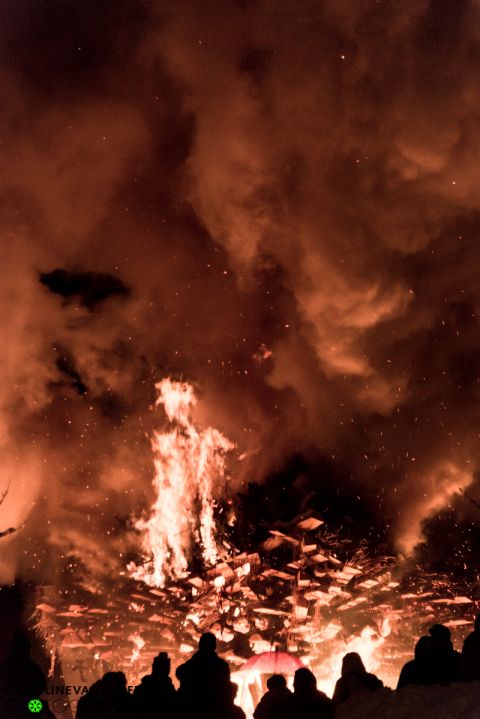
As the festival becomes more and more popular each year, it is impossible to find last minute accommodation in Nozawa around January 15th. This is the only thing you really need to take care of in advance.
Tokyo
We stayed in Tokyo Ueno, just outside the busy city centre and we really enjoyed this area. There were many cozy restaurants and izakaya’s (Japanese bars) and we also visited the Tokyo National Museum. While looking at Japanese art we also learned a lot about the rich history of this country. Japan has been virtually free of foreign influences for centuries. In this homogeneous society, with 99% of the country’s 127 million inhabitants being Japanese, preserving the traditional culture continues to play a major role today. Of course we had to visit the hectic heart of Tokyo, Shibuya. On a weekday over 2,4 million passengers use this metro station. We ended our trip on a high note in yet another karaoke room.
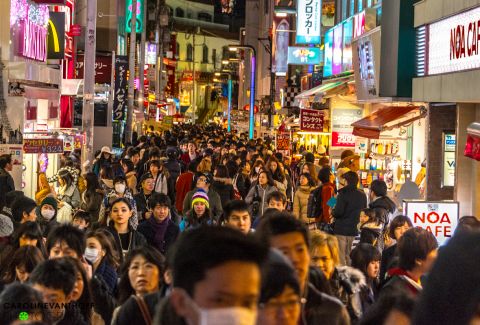
Find more information on skiing in Japan on our Facebook page: https://www.facebook.com/pages/Juulski-Carolinevanthoff-photography-ski-journalists/200031673464843?hc_location=timeline
If you would like to have one of Caroline’s spectacular shots on your wall, you can order them via this link: http://www.libelle.nl/aanbiedi.....en-prikkie
Details:
Myoko gets even more snow than other resorts around Nagano and it is where Grant Gunderson hangs out in January shooting for Powder & Patagonia. Stay in the Morino Lodge http://www.morinolodge.com/lod.....dge-myoko/ and socialize with other riders and have a few drinks in their bar. If you are really lucky the owners Craig and Matt might even go riding with you and show you some of their secret stashes.
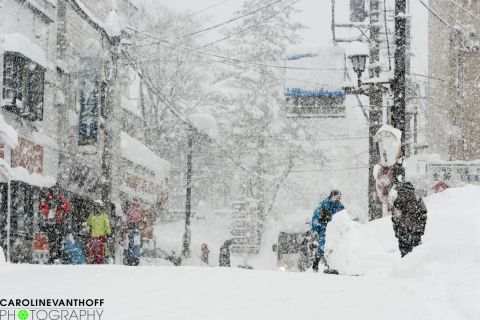
Madarao/Tangram Ski Circus http://www.madarao.jp/ski/_en/ is just a 30-minute taxi ride away from Myoko. There is good tree skiing, especially in Tangram Ski Circus, the resort attached to Madarao. It is still strictly forbidden to ski in the Tangram tree’s and if you are not careful, you pass can be pulled. So just make sure not to drop right below the lift. Or just go on a backcountry tour with a guide from Nagano Outdoorsports http://naganooutdoorsports.net.....index.html.
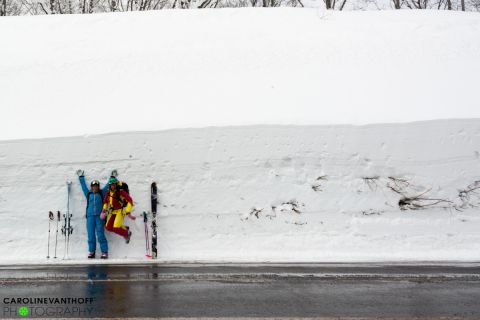
Nozawa Onsen http://www.nozawaski.com/winter/en/ is famous for its many public onsens and the authentic Dosojin Matsuri fire festival on January 15th. Their backcountry alone is a good enough reason to come to Nozawa, as the lines are long and steep and you have them to yourself! A nice traditional place to stay is Furosato Lodge, a cute Japanese ryokan where you can poor yourself a hot sake from their wooden stove at any time.
Dave, the owner and SKI.E.O. of Evergreen Outdoor Adventure http://www.evergreen-hakuba.co..... is our very experienced guide and is currently working on a very cool new project: opening a new controlled backcountry area in Tsugaike. For now it is still illegal to ski off-piste at Tsugaike and your pass will be pulled by ski patrol, but Dave hopes to open the area later this season. Dave was so kind to give us (and Travis Rice) a sneak preview and for two days and we skied the untouched powder in this beech and birch forest!
Happo One http://www.happo-one.jp/english/ is the resort where you can access the true alpine terrain of Hakuba with it stunning spine lines and rugged peaks. To fully admire their beauty we would recommend you to stay in the well-equipped lodge/hut at the top of the highest chairlift. Make sure to rise and shine before dawn and to skin along the ridge for a bit to slowly see the first morning light appear. For around 2 hours Mother Nature will provide a mesmerizing and colorful show in this land of the rising sun.
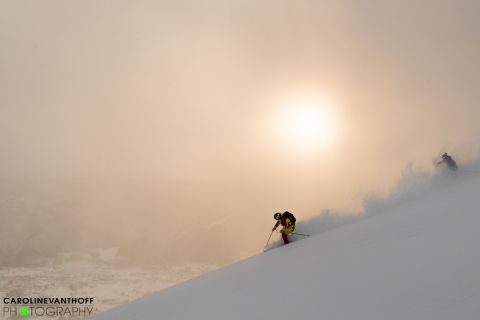
Cortina is known for it’s tree skiing, and the back bowl is a forest with perfectly spaced trees. Nowadays it is a bit more crowded at Cortina, however there is still enough powder to be found, especially if you have the guides from Evergreen Outdoor Tours take you to the back bowls!
Hakuba consists of 9 different resorts and it is located in the heart of the Japanese Alps and skied at Tsugaike, Happo One & Cortina. The options where to stay in Hakuba are endless, no matter what your budget is. Our recommendations are the Aria Hotel: a simple but comfortable hotel right around the corner from the Evergreen office. Or if you prefer a bit more luxury Hotel Mominoki is across from the Evergreen Office and has one of the best onsens in town. The good thing is, you don’t have to be a hotel guest to visit the onsen.
For an overview of accommodation resorts and more information about the resorts, make sure to check the website of Ski Japan Holidays http://www.japanspecialists.com
Due to high avalanche hazard we did not get to ski Tenjindake http://www.tanigawadake-rw.com/gelande/. The terrain is steep and in some places very exposed. Some people even call Tenjin “avalanche alley” because lots of the lines that you ski end up in the same valley. We would therefore recommend you to ski off-piste with a guide. Although the terrain seems pretty extreme, we can definitely see the potential when the conditions are right. You instantly feel at home in the cozy Tenjin Lodge http://www.tenjinlodge.com and it is also a great place to meet other riders.
Arigota gozaimas, sayonara!
Caroline-san & Julie-san
